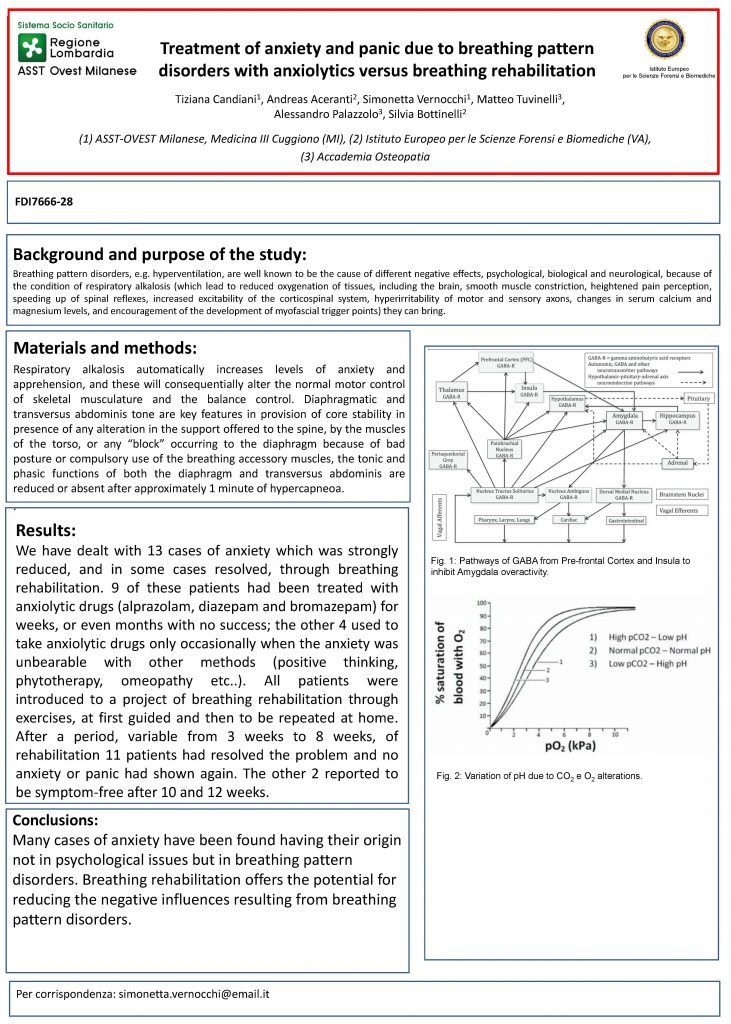The
acid-base balance is fundamental to maintain a proper psychological balance.
When the breathing patter is altered symptoms like anxiety and panic can show
up and can be resistant to drugs.
Rationale: Breathing pattern disorders (BPD) are well known to
be the cause of different negative effects, psychological, biological and
neurological, due to the condition of respiratory alkalosis they can bring and automatically
increasing levels of anxiety and apprehension and, consequentially, alter the normal
motor control of skeletal musculature and of balance. Diaphragmatic and
transversus abdominis tone are key features to provide core stability in
presence of any alteration in the support offered to the spine by the muscles
of the torso, or any “block” occurring to the diaphragm because
of bad posture or compulsory use of the breathing accessory muscles, the tonic
and phasic functions of both the diaphragm and transversus abdominis are
reduced or absent after about 1 min of hypercapneoa. Many cases of anxiety have
been found having their origin not in psychological issues but in BPD.
Breathing rehabilitation (BR) helps to reduce the negative influences resulting
from BPD
Results: we have dealt with 13 cases of anxiety which was
strongly reduced or resolved, through BR. 9 of these patients had been treated
with anxiolytic drugs (alprazolam, diazepam and bromazepam) for weeks, or even
months with no success; the other 4 used to take anxiolytic drugs only
occasionally when the anxiety was uncontrollable by other methods. All patients
were introduced to a project of BR, after a period, variable from 3 to 8 weeks,
of rehabilitation 11 patients had resolved the problem and no anxiety or panic
had shown again. The other 2 reported to be symptom-free after 10 and 12 weeks.
Authors: T. Candiani, S. Vernocchi, A. Palazzolo, M. Tuvinelli, S. Bottinelli, A. Aceranti
Published: Italian Journal of Medicine, Sept 2017
Presented: poster at Congresso Nazionale di Psichiatria SIP, 2018


